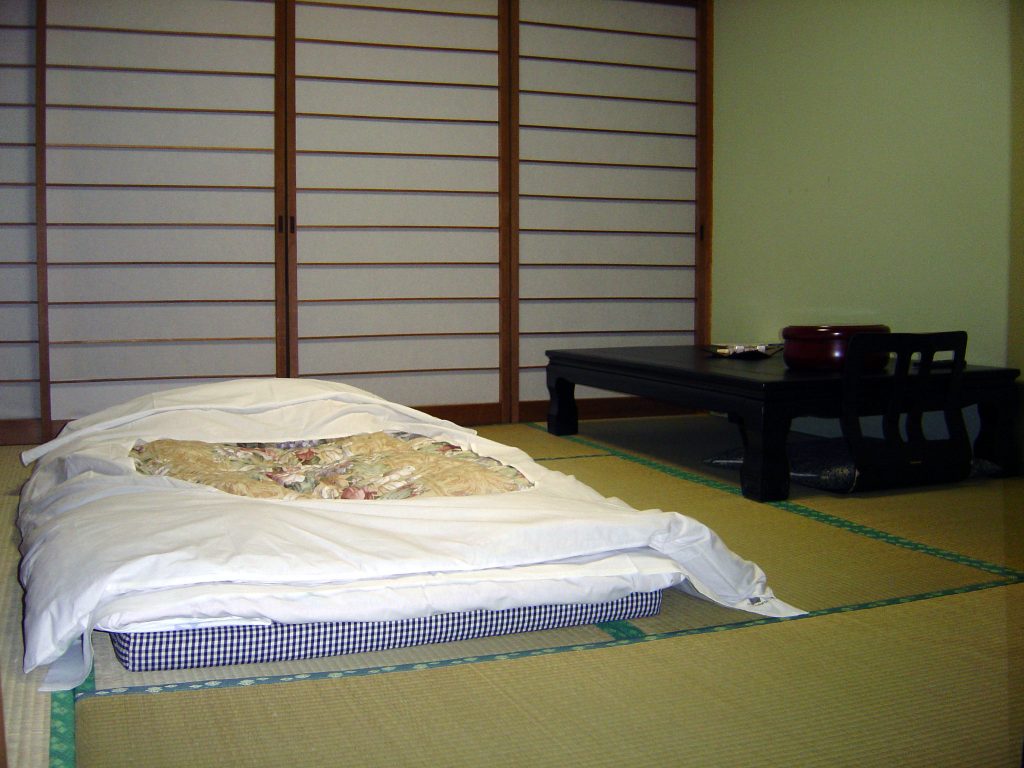Source: Flickr | jpellgen
Whether your style and home décor tastes are more modern or eclectic, you can probably appreciate Japanese-inspired rooms’ simple elegance. There is just something about the clean lines and clutter-free spaces that make them welcoming and relaxing all at once. Specifically, if you look at traditional bedroom furnishings, you will quickly note the Japanese futon mattress and where it is positioned. If you have been to a more modern hotel in the last few years, you have seen some influences from this type of styling. In a way, stylish looks appeal to that same Japanese simplicity. Many spas and resorts have Zen gardens and other hints of Asia invading their spaces.
Much of the placement and orientation of spaces is and has been inspired and influenced by the principles of Feng Shui for several years. This technique is all about the alignment and position of objects within specific places in each space of one’s home and business. The orientation and placement relate to auspicious areas where good fortune will come when harmonized correctly. Whether you believe in such traditions or not, you will find the balance and orientation in Japanese homes to feel pleasing to you.
Futon Mattress Beds
Traditionally, the futon is placed low on the floor and is positioned on tatami mats. These mats were once reserved for the luxury of the nobility. Tatami mats originally were made of rice straw, but newer construction has them made of compressed wood and even Styrofoam. The mat is used as a flooring in the traditional Japanese home.
Futon bed frames are traditionally quite simple and consist of nothing more than slats to support the futon mattress itself. You can now find more modern versions of these frames with storage, shelving, and even headboard designs. If you want to keep a traditional Japanese look, then it would best serve you to keep your frame simple. Also, these futon frames are made of wood. The frames are made of unfinished wood like cedar or other locally sourced wood in most cases. Metal futon frames and the futon armrest frame are more Western inventions or takes on the traditional Japanese futon. As I doubt you will want to make your own, I suggest you read this post for excellent advice on choosing the best type of mattress.
Japanese Futon Bedding
The traditional way a futon mattress is composed is using a two-layer approach. The bottom mattress layer is called the shikibuton, and the thicker upper, quilted futon cover is called a kakebuton. Combined, they form the traditional Japanese futon mattress or just futon. Regular hanging outdoors is necessary to clean these two components of the bedding. It is customary to use a bamboo stick or pole to hit them to help clean them more fully in Japan.
There are several differences between the traditional Japanese futon and the ones we most commonly see here in the West. As just alluded to, the type of mattress we use is much thicker and usually associated with a larger frame used as a sofa or couch for extra seating. In this case, the futon is generally folded in half and can be covered with any number of specially made futon covers in assorted styles and fabrics.
The Western futon is used more as a guest’s bed or extra sleeping in a home office or den. They may also require sofa bedding so that they fit correctly. Rarely is the futon used as one’s primary sleeping arrangement here in the UK. However, with advancements made in futon mattress materials and design, the type sold nowadays are on par with the conventional mattress.

